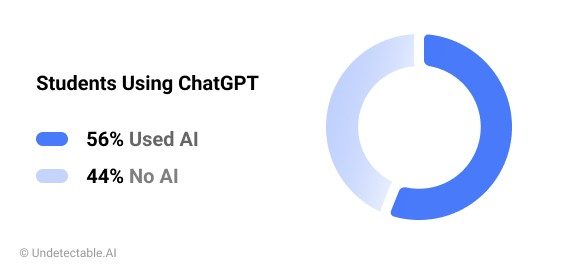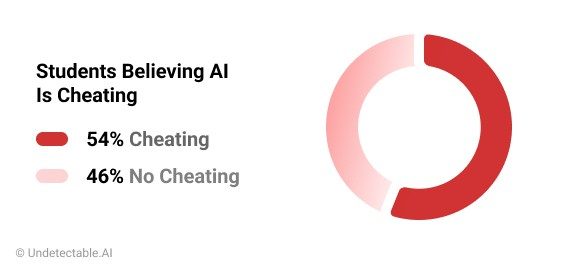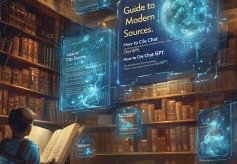
Academic integrity is a cornerstone of educational institutions worldwide. With the rise of advanced AI tools like ChatGPT, questions about the detection of AI-generated content have become increasingly relevant. Universities, colleges, and schools must adapt to these technological advancements to maintain the authenticity of academic work. Can universities detect ChatGPT? This article delves into the methods and technologies used to identify AI-generated work and the implications for students and educators.
Understanding ChatGPT
ChatGPT, developed by OpenAI, is a powerful language model that can generate human-like text based on the input it receives. By using deep learning techniques and extensive datasets, ChatGPT predicts and generates text that is contextually appropriate and coherent. This ability makes it a valuable tool for writing, brainstorming, and answering questions. However, the question arises: can universities detect ChatGPT? Its use in academic settings raises significant concerns about originality and integrity, as AI-generated content may undermine the educational process if not properly managed. Consequently, educational institutions are developing and implementing various detection methods to address these challenges effectively.
Usage of ChatGPT in Academia
The integration of ChatGPT in academic settings is both a boon and a challenge. On one hand, it offers students a powerful tool for generating ideas, structuring essays, and answering complex questions. On the other hand, it raises significant issues related to academic integrity and originality. The question "Can universities detect ChatGPT?" is at the forefront of these concerns, prompting institutions to develop sophisticated detection methods.

Can Universities Detect ChatGPT?
Universities employ a variety of tools and techniques to detect AI-generated content like ChatGPT. These methods include advanced plagiarism checkers, AI detection software, and manual review processes by educators. Advanced plagiarism checkers, such as Turnitin, have begun incorporating AI detection algorithms to identify patterns typical of machine-generated text. These tools analyze the coherence, consistency, and stylistic elements of submissions to flag suspicious content.
Moreover, universities are investing in specialized AI detection software designed specifically to identify text produced by models like ChatGPT. These programs leverage machine learning to recognize the subtle markers of AI-generated text, which might not be apparent to human reviewers. In addition to software solutions, manual review processes play a crucial role. Educators compare current student submissions with previous work to spot discrepancies in writing style and quality that might indicate the use of AI tools. The goal of these detection methods is to ensure academic integrity and prevent the misuse of AI technologies in assignments and research. By identifying AI-generated content, universities aim to uphold the standards of originality and encourage students to engage in authentic learning experiences. This multi-faceted approach helps maintain the credibility of academic qualifications and the overall educational process.
Can Schools Detect ChatGPT?
Primary and secondary schools also face the challenge of detecting ChatGPT usage, albeit with different resources and approaches compared to universities. While they may not always have access to the most advanced AI detection tools, teachers rely on a combination of intuition, observation, and available technology to identify AI-generated content. Teachers often notice changes in student performance that could indicate the use of AI tools like ChatGPT. Sudden improvements in writing quality, shifts in vocabulary, or inconsistencies in tone can raise suspicions. These signs prompt teachers to investigate further, sometimes involving manual comparisons with previous student work to identify discrepancies.
Plagiarism detection tools, though primarily designed to spot copied content, are also used to detect AI-generated text. While these tools may not be as sophisticated as those used in universities, they can still flag unusual patterns and help teachers identify potential misuse. Moreover, as AI detection technology evolves, more advanced features are gradually becoming available to schools, enhancing their ability to maintain academic integrity. Training and awareness programs are crucial in equipping educators with the skills needed to detect and address AI usage. Schools are increasingly providing professional development opportunities focused on understanding AI tools and their potential impact on education. These programs help teachers recognize AI-generated content and develop strategies to discourage its misuse.
By combining technological tools, teacher intuition, and ongoing training, primary and secondary schools are working to ensure that students engage in authentic learning experiences. This multifaceted approach is essential for maintaining the integrity of the educational process and preparing students for future academic and professional challenges.
Can Colleges Detect ChatGPT?
Colleges, much like universities, are deeply invested in maintaining high academic standards and integrity. To achieve this, they are deploying sophisticated detection tools and implementing stringent policies. The question "Can colleges detect ChatGPT?" is becoming increasingly pertinent as AI tools evolve and become more accessible. To analyze writing styles, colleges employ software that compares student submissions with a database of previous works. This analysis looks for inconsistencies in style, vocabulary, and overall coherence, which can indicate the use of AI. For instance, sudden shifts in complexity or an unusually formal tone might raise red flags for reviewers. In addition to style analysis, originality checks are a cornerstone of these detection methods. Advanced plagiarism detection tools like Turnitin and Grammarly have integrated AI detection features. These tools not only compare text against a vast repository of sources but also use algorithms to identify patterns characteristic of AI-generated content.
Do colleges check for ChatGPT? Yes, they use specialized software designed to detect the subtle markers left by AI language models, such as repetitive phrasing and unnatural sentence structures. By identifying these indicators, colleges can flag suspicious submissions for further review. Policies and procedures are continuously updated to keep pace with the evolving capabilities of AI technologies. By leveraging advanced detection tools, updating policies, and fostering a culture of integrity, colleges ensure that academic achievements remain genuine and credible.
How Do Professors Know If You Use ChatGPT?
Professors, through their extensive experience and familiarity with students' work, often have the ability to detect the use of ChatGPT and similar AI tools. The question "How do professors know if you use Chat GPT?" involves a combination of observational skills, analytical tools, and a deep understanding of writing nuances. One of the primary indicators is inconsistency in writing style. Professors who have reviewed a student's previous work can often spot abrupt changes in writing quality, tone, or vocabulary. For instance, a student who typically writes in a straightforward manner may suddenly produce a highly sophisticated and polished piece, raising suspicions. Unusual phrasing and structural anomalies are also tell-tale signs. AI-generated content may include awkward or repetitive phrasing that doesn't align with natural human writing patterns.
A lack of personal insight or depth is another red flag. Human writers, especially in academic settings, often infuse their work with personal insights, reflections, and specific details drawn from their experiences and learning. AI-generated text, while coherent and contextually appropriate, may lack this level of depth and personal touch, making it stand out to seasoned educators. To complement their observational skills, can professors detect Chat GPT using specialized software designed to detect AI-generated content? Yes, these tools analyze text for patterns typical of AI output, such as statistical anomalies in word usage and sentence structure. By comparing the submitted work with a database of known AI-generated texts, the software can flag suspicious content for further review. Additionally, professors might conduct oral examinations or in-class writing assignments to verify a student's capabilities, ensuring a comprehensive approach to maintaining academic integrity.
Detection Tools and Software
A range of tools and software is available to detect AI-generated content, including advanced plagiarism checkers, AI detection algorithms, and writing style analyzers. Tools like Turnitin have integrated AI detection capabilities, providing a robust solution for educators to identify ChatGPT-generated text. These technologies analyze text for patterns, coherence, and originality, offering a comprehensive approach to maintaining academic integrity.
Advanced plagiarism checkers like Turnitin and Grammarly have evolved to include AI detection capabilities. These tools not only compare text against extensive databases but also look for unique markers of AI-generated content, such as repetitive phrasing and unnatural sentence structures. AI detection algorithms analyze text for patterns typical of AI output, using machine learning to recognize and flag suspicious content. So, can ChatGPT be detected? Yes, with these advanced tools, educators can effectively identify AI-generated text.
Writing style analyzers compare the submitted text with a database of known writing samples to identify inconsistencies in style. They can spot sudden changes in vocabulary, tone, and complexity that might indicate the use of AI. By leveraging these tools, educators can maintain academic integrity and ensure the originality of student work.
Human Review vs. Automated Detection
Both human review and automated detection play crucial roles in identifying AI-generated content, each with distinct strengths and weaknesses. Human reviewers bring context, experience, and a nuanced understanding of writing styles to the detection process. They can identify subtle inconsistencies, personal insights, and contextual relevance that automated tools might miss. For example, a professor familiar with a student’s previous work can spot unusual improvements or shifts in writing style that may indicate AI usage.
Automated detection tools, on the other hand, provide scalability, speed, and consistency. They can analyze large volumes of text quickly and identify patterns indicative of AI-generated content, such as repetitive phrasing and statistical anomalies. These tools can also compare text against extensive databases to detect similarities and potential plagiarism, making them invaluable for initial screenings.
Combining both methods can offer the best results. Automated tools can handle the bulk of initial detections, flagging suspicious content for further review. Human reviewers can then provide a deeper analysis, bringing their contextual knowledge and experience to bear. This hybrid approach ensures that AI-generated content is accurately identified and addressed, maintaining academic integrity while leveraging the strengths of both human and automated detection methods.

Academic Policies on AI Usage
Educational institutions are increasingly developing specific policies to regulate the use of AI tools like ChatGPT, aiming to ensure responsible and ethical usage among students. These policies are essential to maintain academic integrity while leveraging the benefits of AI technologies in a controlled and fair manner.
Guidelines on acceptable use are a fundamental component of these policies. They clearly define how and when AI tools can be used in academic work. For instance, some institutions may allow the use of AI for brainstorming and initial drafts but require students to do the final writing and editing themselves. Others might permit AI assistance for specific assignments while prohibiting it for exams or final projects. Consequences for misuse are also outlined to deter students from relying too heavily on AI tools. These consequences can range from failing the assignment to more severe academic penalties, such as suspension or expulsion, depending on the extent of the misuse. By setting these clear consequences, institutions emphasize the importance of originality and personal effort in academic work.
By setting clear expectations and developing comprehensive policies, universities can help maintain academic integrity while leveraging the benefits of AI technologies. These policies not only protect the value of academic qualifications but also prepare students for a professional environment where ethical use of AI will be increasingly important.
Preventing AI Misuse in Education
Preventing AI misuse in education involves a multi-faceted approach. Schools and universities implement awareness campaigns, stricter policies, and advanced detection tools to tackle AI-generated content. Awareness campaigns educate students and faculty about the ethical implications and consequences of AI misuse, fostering a culture of integrity. Stricter policies clearly define acceptable AI use and outline penalties for violations, deterring inappropriate use. Improved detection tools, such as advanced plagiarism checkers and AI detection software, are integrated into submission processes to automatically screen for AI-generated content. Educator training programs equip teachers with the skills to detect and address AI misuse, enhancing their ability to maintain academic integrity.
By combining these strategies, educational institutions ensure responsible AI use, promoting genuine learning and upholding the value of academic qualifications. This comprehensive approach prepares students for future professional environments where ethical AI use is crucial.
The Future of AI in Education
The future of AI in education is promising, offering numerous benefits for learning and teaching. AI can provide personalized learning experiences tailored to individual student needs, enhancing engagement and understanding. It can also assist with administrative tasks, freeing up educators' time for more impactful interactions with students. Additionally, AI can enhance research capabilities by quickly analyzing vast datasets and identifying patterns that might be missed by human researchers. However, the responsible management of AI use is crucial. As AI tools become more integrated into educational settings, the importance of ethical use and maintaining academic integrity grows. Ongoing advancements in AI detection technologies will be essential in identifying AI-generated content, ensuring that the benefits of AI do not compromise academic standards.
Robust policies and continuous educator training will also play a key role. Clear guidelines on AI usage, combined with effective detection tools and well-trained educators, will help navigate the challenges and opportunities presented by AI. By fostering a culture of responsibility and ethical behavior, educational institutions can harness the full potential of AI while maintaining the integrity and value of education.
Conclusion
As AI tools like ChatGPT become more integrated into our daily lives, educational institutions are adapting to ensure academic integrity. Can universities detect ChatGPT? Yes, they are developing sophisticated methods to identify AI-generated content, balancing the benefits of technology with the need for originality and ethical behavior. By understanding these detection techniques and the ethical implications of using AI, students and educators can navigate this evolving landscape responsibly, ensuring that AI enhances rather than undermines the educational experience.
FAQs
- Can universities detect ChatGPT? Yes, universities use advanced tools and techniques to detect AI-generated content.
- Can schools detect ChatGPT? Schools can detect ChatGPT using plagiarism checkers, teacher observations, and changes in student performance.
- How do professors know if you use ChatGPT? Professors can detect ChatGPT by analyzing writing style, consistency, and using detection software.
- Can people tell if you use Chat GPT? Experienced educators can often tell if you use ChatGPT through careful reading and analysis.
- Do colleges check for Chat GPT? Yes, colleges check for ChatGPT usage through advanced detection tools and policies.
- How can teachers tell if you use ChatGPT? Teachers can tell if you use ChatGPT by noticing inconsistencies in writing style and using detection software.
- Can ChatGPT be detected? Yes, ChatGPT can be detected using specialized software and analytical techniques.



